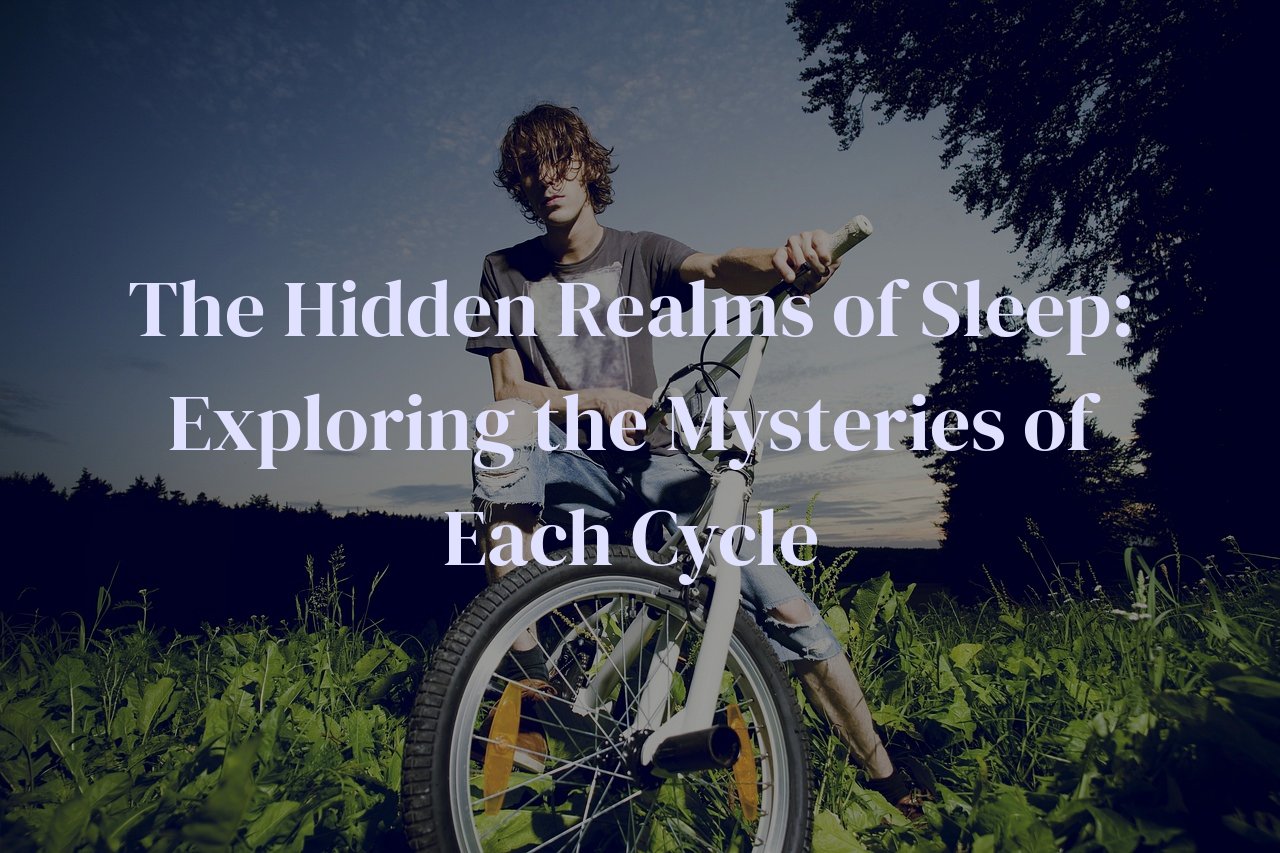
Imagine a world where each night brings a journey through different realms of rest and rejuvenation. This post is your chance to dive deep into the concept of Sleep Architecture, a term that describes the complex structure of our sleep cycles. Some might think sleep is just a period of unconsciousness, but it’s actually composed of several stages, each serving a unique purpose.
By reading this post, you’ll uncover the fascinating details of what happens as you transition through each phase of sleep. You’ll learn about the benefits each stage brings to your mental and physical health, techniques to enhance your sleep quality, and possibly even improve your daily life. Additionally, I’ll share some personal anecdotes to make this informative journey relatable and engaging.
Table of Contents
The Prelude: Understanding Sleep Architecture
As someone who has spent countless nights wrestling with the elusiveness of restful sleep, I find the concept of ‘Sleep Architecture’ both fascinating and enlightening. Understanding how our nightly journey is structured can provide us with the keys to unlocking better rest, just as an architect uses blueprints to build a strong foundation.
Sleep architecture refers to the cyclical pattern of sleep stages that our brains progress through each night. This sophisticated system isn’t just about closing our eyes and drifting off; it is intricately designed to rejuvenate and restore our bodies and minds. When I first started diving into the intricacies of each phase, I was amazed at how meticulously orchestrated our sleep really is.
One of the first things I learned is that sleep is divided into two broad categories: Non-Rapid Eye Movement (NREM) and Rapid Eye Movement (REM) sleep. These cycles repeat several times throughout the night, each cycle lasting approximately 90 to 120 minutes. Knowing this helped me comprehend why waking up at the wrong time can leave me feeling groggy, while waking up at the end of a cycle can make me feel surprisingly refreshed.
NREM sleep itself is subdivided into three stages, each with its unique characteristics and purposes. Understanding these stages is crucial for anyone looking to enhance their sleep quality. For instance, Stage 1 is the lightest phase, often described as the ‘gateway to sleep.’ Here, our bodies begin to relax, and our brain waves start to slow down. This stage is short, usually lasting only several minutes, but it’s essential as it transitions us into deeper sleep.
Stage 2 is where we spend the majority of our sleep time, about 50%. It is characterized by a further reduction in brain activity and body temperature. This is also where sleep spindles and K-complexes, which are specific brain wave patterns, occur. These play a critical role in consolidating our memories and learning.
In an era where stress and a fast-paced lifestyle often wreak havoc on our sleep patterns, understanding the nature of Stage 3 and 4 sleep becomes even more pertinent. These stages, collectively known as slow-wave sleep (SWS), are the deepest and most restorative parts of our slumber. Our brains produce delta waves, the slowest brainwaves, crucial for tissue repair, muscle growth, and overall physical rejuvenation. I’ve personally felt the difference in my energy levels when I’ve had adequate deep sleep versus nights when it’s been compromised.
Lastly, REM sleep is where the magic of dreams occurs. This phase is marked by rapid eye movements, increased brain activity, and vivid dreams. REM sleep is vital for emotional processing, cognitive function, and memory consolidation. Missing out on REM sleep can leave us feeling mentally foggy and emotionally unbalanced.
In conclusion, sleep architecture is a complex and beautiful ballet of physiological changes that our bodies and minds undergo to repair and rejuvenate. By taking the time to understand this architecture, we can make informed decisions to optimize our sleep environment and habits. From my own journey, I can attest that being mindful of these cycles can significantly impact not only the quality of our sleep but our overall well-being.
The Light Sleep: Stages 1 and 2
As we drift into the initial phase of slumber, we enter what is known as light sleep, encompassing Stages 1 and 2 of the sleep cycle. These stages are like the gentle prelude to the deeper and more restorative stages of sleep, setting the stage for the night ahead.
Stage 1 is the gateway, a fleeting phase that lasts for just a few minutes. During this time, our bodies begin to wind down, and we experience the sensation of drowsiness. Muscle activity decreases, yet we can still be easily awakened by nearby sounds or movements. Have you ever experienced that sudden jerk or twitch as you fall asleep? This phenomenon, known as hypnic jerks, is common in Stage 1. Interestingly, these twitches often coincide with vivid dream-like imagery, giving a sense of falling or tripping.
As we transition into Stage 2, our bodies and minds start to relax more deeply. This stage is quite significant as it occupies about 50% of our total sleep time. One of the hallmarks of Stage 2 is the appearance of sleep spindles and K-complexes on an EEG. Sleep spindles are bursts of rapid brain activity that may help protect the brain from awakening due to external noises. K-complexes, on the other hand, are thought to play a role in memory consolidation and response to stimuli. For me, these stages feel like a gentle descent into the depths of sleep, where the worries of the day start to fade away.
This part of the sleep cycle also sees a drop in body temperature and heart rate, preparing our system for the more restorative stages to follow. It is during these early stages that our bodies undergo physical relaxation, which is crucial for muscle recovery and overall restfulness. Personally, I notice that on days when I allow myself a calming bedtime routine, my transition through these light sleep stages feels smoother, and I wake up feeling more refreshed.
In essence, Stages 1 and 2 of light sleep are all about winding down and setting the stage for the deeper phases of sleep. They are the gentle nudge that guides us from the hustle and bustle of our waking life into the tranquil and rejuvenating world of sleep. By understanding the nuances of these stages, we can appreciate why a proper bedtime routine and sleep-friendly environment can make a world of difference for our overall well-being.
Diving Deeper: Stages 3 and 4
When we talk about truly restorative sleep, we can’t overlook the significance of Stages 3 and 4, often referred to as deep sleep or slow-wave sleep (SWS). This phase is crucial for feeling refreshed and invigorated upon waking, and it has profound impacts on both physical and mental well-being.
Stage 3 of sleep is the beginning of deep sleep and is marked by the appearance of delta waves, which are high amplitude, low-frequency brain waves. As we transition from Stage 2 to Stage 3, our body enters a period where it becomes incredibly challenging to wake up. This stage sets the stage for more intensive repair processes to begin.
As we further descend into Stage 4, the deepest stage of non-REM sleep, delta waves become predominant. This is the sleep that our bodies crave when we are feeling particularly worn out or sleep-deprived. The most restorative functions occur here, which is why you might hear people say, ‘That was some much-needed deep sleep.’
During these stages, the body is hard at work. Growth hormone levels spike, helping with tissue repair and growth. This is critical for athletes or anyone physically active, as it’s the body’s natural way of healing microtears in muscles and promoting overall physical recovery. The immune system also gets a significant boost, enhancing its ability to fight off infections and inflammation.
The brain, too, benefits immensely from Stages 3 and 4. During deep sleep, your cerebrospinal fluid increases in flow, acting like a ‘washing’ mechanism that helps clear out waste products such as beta-amyloid. This can have a long-term protective effect on against neurodegenerative diseases like Alzheimer’s.
Moreover, emotional and mental health are nurtured during these deep sleep stages. Studies suggest that deep sleep aids in memory consolidation, helping store important information and discard irrelevant data. This is why a good night of deep sleep can leave you feeling sharper and more focused the next day.
From my own experience, I often noticed that the nights where I hit these deep sleep stages uninterrupted, I woke up feeling like I could conquer the world. Conversely, on nights when my deep sleep was short-lived or disturbed, I felt hazy and lethargic, no matter how many hours I’d spent in bed. It’s like the body knows exactly what it needs and craves these stages for genuine recovery.
In essence, the deeper stages of sleep are the heart and soul of our nightly rest. Understanding and optimizing for these phases can pave the way for a healthier, more energized life. By prioritizing high-quality sleep, you’re giving your body the best possible chance to repair, rejuvenate, and thrive.
The Dream World: REM Sleep
Among the various stages of sleep, REM (Rapid Eye Movement) sleep stands out as the most peculiar and enigmatic. It’s a phase where dreams flourish and the brain engages in frenetic activity, almost rivaling its wakeful state. As someone who has spent years juggling the responsibilities of a healthcare professional and a blogger, I’ve often delved into the profound impact this stage has on our health and mental well-being.
Entering REM sleep is akin to drifting into an alternate reality. It’s during this phase that our most vivid and memorable dreams occur. But what exactly happens in this dream world? For starters, the brainwaves recorded during REM are similar to those of an awake, alert person. This paradoxical state, where the brain is highly active but the body is in a near-paralyzing stillness, is called ‘paradoxical sleep.’ It’s fascinating how the body achieves this paralysis called ‘atonia’, preventing us from acting out our dreams.
REM sleep has several crucial functions. One of the most well-known is its role in memory consolidation. The brain takes the information gathered throughout the day and processes it, turning short-term memories into long-term ones. This was something I found particularly striking in my early medical training when I struggled to retain vast amounts of information. Leveraging nap breaks with ample REM sleep often made a noticeable difference in my ability to recall complex medical terminologies and concepts.
Moreover, REM sleep is vital for emotional regulation. During REM, the brain processes emotions, resolving emotional conflicts and ensuring emotional stability. I’ve certainly experienced this firsthand. On days of high stress or emotional turmoil, a good night’s sleep has often been my most reliable therapist. Waking up after a night filled with adequate REM phases often leaves me feeling more balanced and resilient.
An important aspect of REM sleep is its impact on creativity. The brain, unfettered by the usual constraints of logical thinking, freely explores new ideas and problem-solving strategies. Many creative individuals, including writers, artists, and even scientists, report breakthroughs in their work as they wake up from dream-infused REM sleep. As a health blogger, my own creative process is frequently influenced by insights gleaned from dreams, often leading to more engaging and thought-provoking content.
Interestingly, the duration and frequency of REM sleep cycles change throughout the night. In the early stages of sleep, REM periods are shorter but gradually lengthen as the night progresses. This makes the latter part of the night’s sleep particularly important and underscores the necessity of a full night’s rest. Cutting sleep short can severely deprive one of these later, richer REM cycles, impacting memory, emotion regulation, and creativity.
As we continue to explore and understand REM sleep, its mysteries become even more intriguing. Each of us experiences REM differently, shaped by our unique lifestyles, stress levels, and sleep habits. Recognizing its significance and finding ways to protect and optimize our REM sleep can contribute significantly to our overall well-being. And as someone who has walked this journey, I can attest to the transformative power of understanding and harnessing the dream world.
Optimizing Your Sleep Architecture for Better Health
Understanding the complexities of sleep architecture is not merely an academic exercise; it can have profound implications for your overall health. In my own journey to better sleep, I have discovered several strategies that drastically improved my sleep quality.
First and foremost, establishing a consistent sleep schedule is crucial. Our bodies thrive on routine, and waking up and going to bed at the same time every day helps to regulate the internal clock. I have found that even on weekends, maintaining a regular schedule keeps me feeling refreshed.
A calming pre-sleep routine can set the stage for a restful night. Activities like reading a book, taking a warm bath, or practicing mindfulness meditation can signal to your body that it is time to wind down. I often use lavender essential oils, which create a calm atmosphere that aids relaxation.
Another pivotal aspect is creating an optimal sleep environment. This includes a comfortable mattress and pillows, cool room temperature, and minimal noise and light. Investing in blackout curtains and a white noise machine has made my bedroom a veritable sleep sanctuary.
Nutrition also plays a surprising role in sleep quality. Foods rich in magnesium, such as almonds and spinach, can help relax muscles. I avoid caffeine and heavy meals close to bedtime as they interfere with my ability to fall asleep smoothly.
Engaging in regular physical activity can be immensely beneficial. However, timing matters; exercising too close to bedtime can have a stimulating effect. I prefer morning runs, which not only energize my day but also contribute to better sleep at night.
Limiting screen time before bed is another critical strategy. The blue light emitted from screens inhibits the production of melatonin, the sleep hormone. I use blue light filtering glasses if I must use my devices in the evening.
Mental health and stress management are integral to sleep quality as well. Practicing techniques such as deep-breathing exercises, journaling, or even talking with a therapist can alleviate anxiety and promote better sleep. Personally, keeping a gratitude journal has brought me peace of mind, fostering more restorative sleep.
Supplements like melatonin or magnesium can sometimes help but should be used cautiously and preferably under medical supervision. For me, occasionally taking a melatonin supplement works wonders, particularly during travel.
Lastly, understanding your individual sleep needs is essential. Not everyone requires the standard eight hours. By experimenting and listening to my body, I have found that seven hours of quality sleep leaves me at my most vibrant and alert.
The quest for optimized sleep is highly personal, but the rewards are universal. Better health, heightened cognitive function, and improved emotional well-being await those who explore the hidden realms of sleep architecture.
Conclusion
In our daily rush, we often overlook the importance of truly understanding and optimizing our sleep. By now, you should have a clearer picture of what makes up the various stages of sleep and how each contributes to our well-being. Applying this knowledge in your daily routine can lead to profound improvements in your physical and mental health.
Remember, improving sleep isn’t an overnight process. With patience and a willingness to change, you can enhance your sleep architecture and, ultimately, your quality of life.



